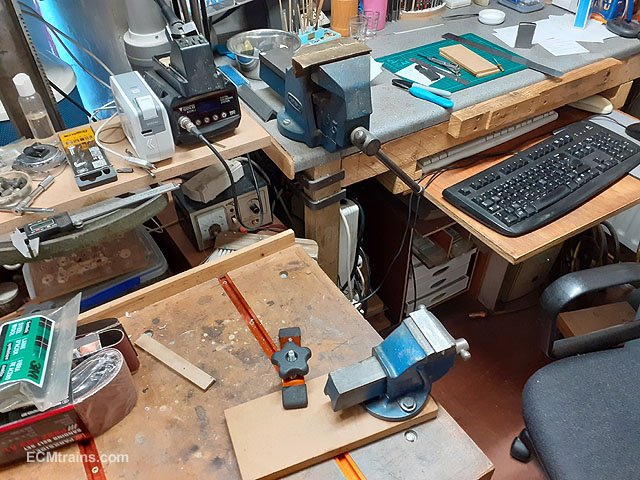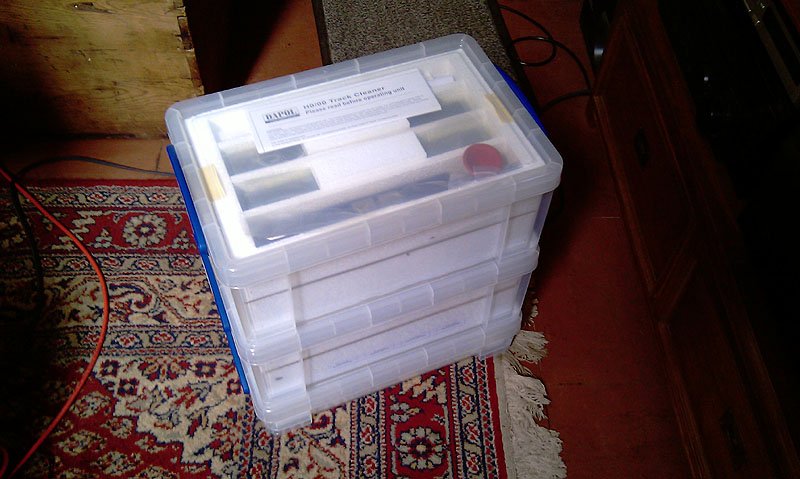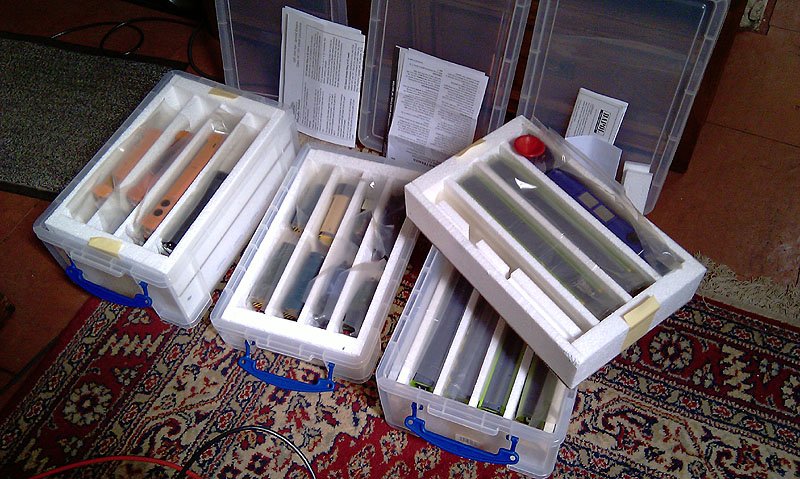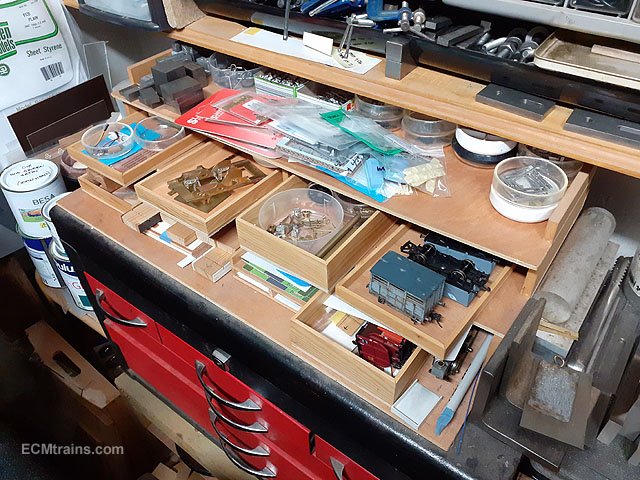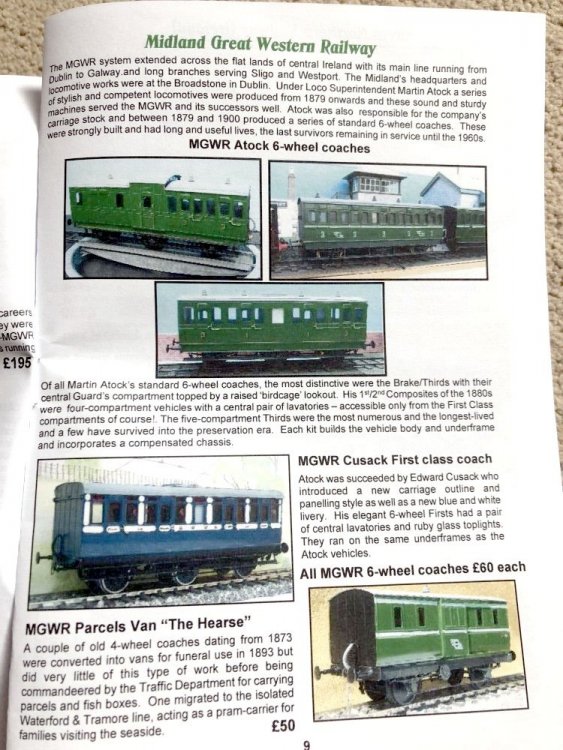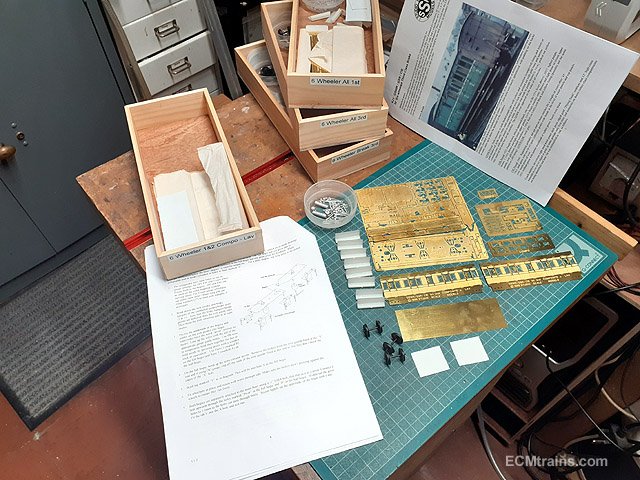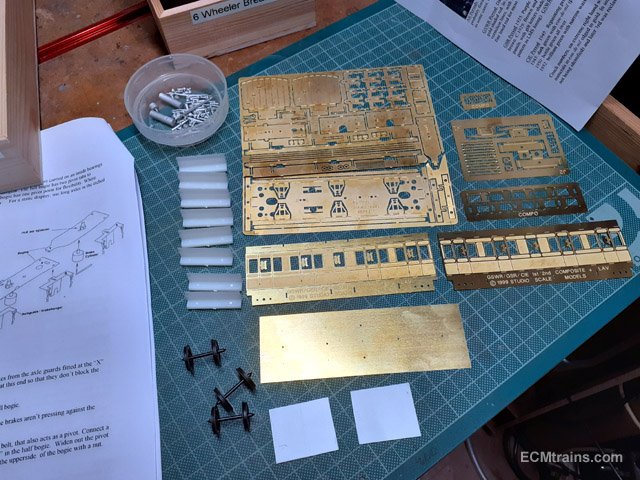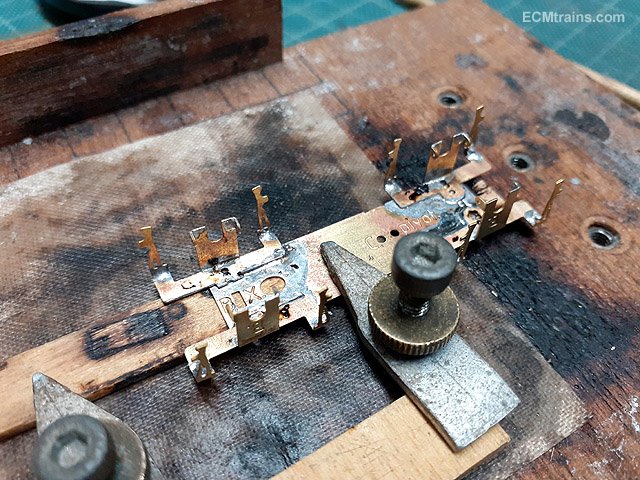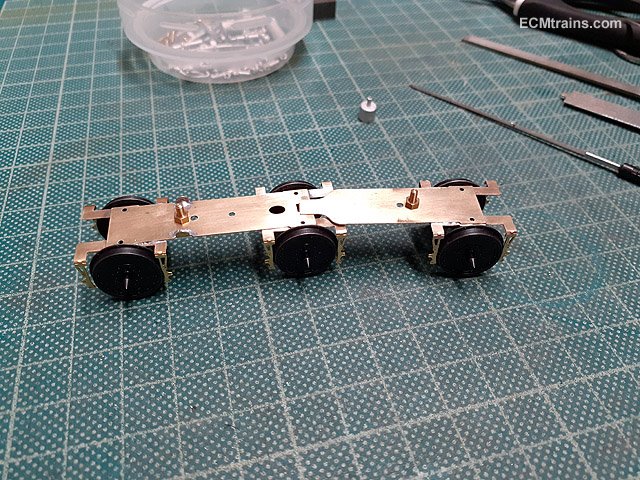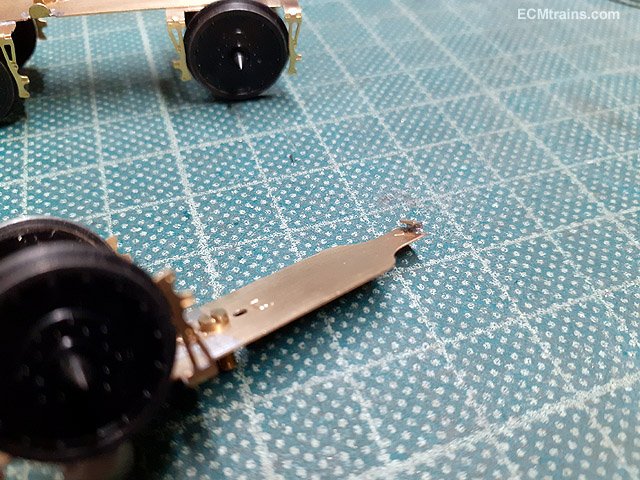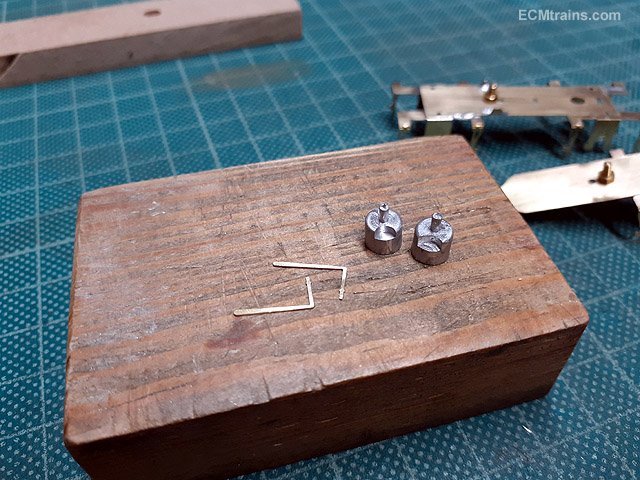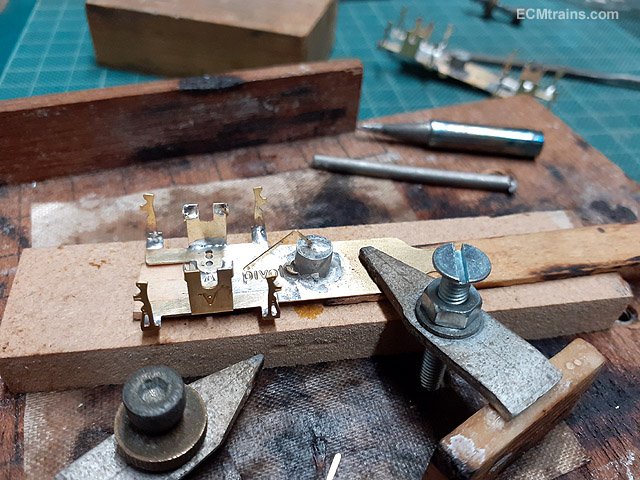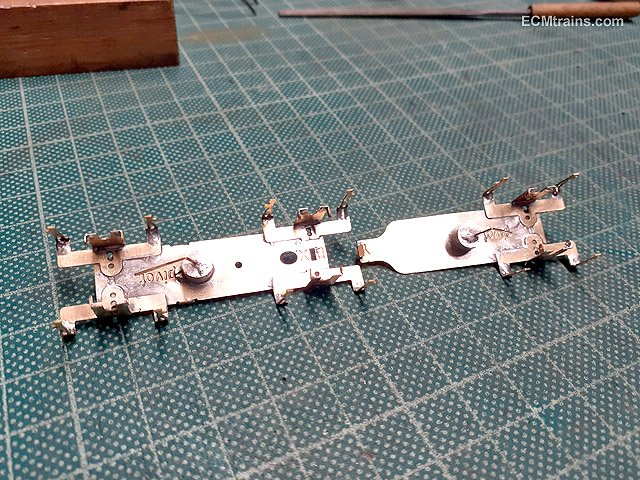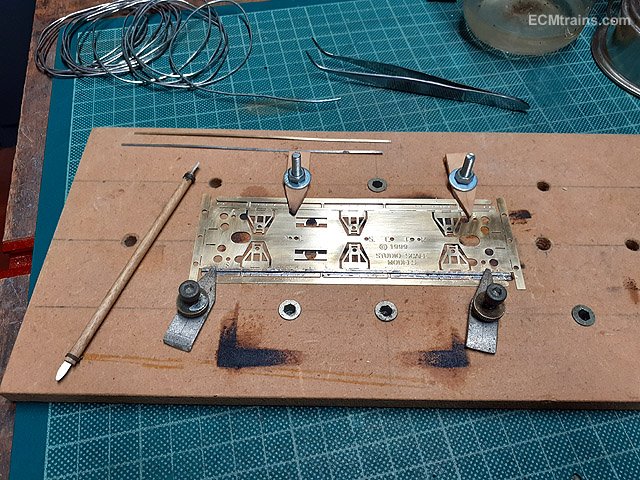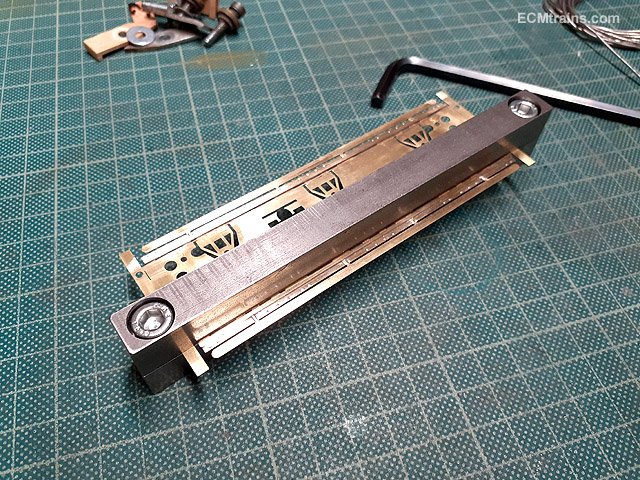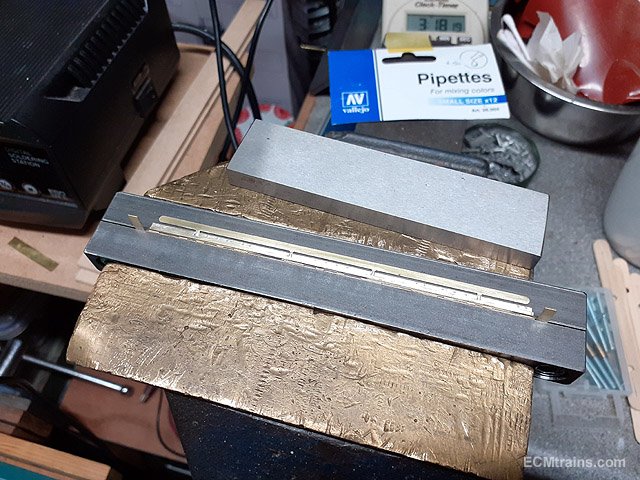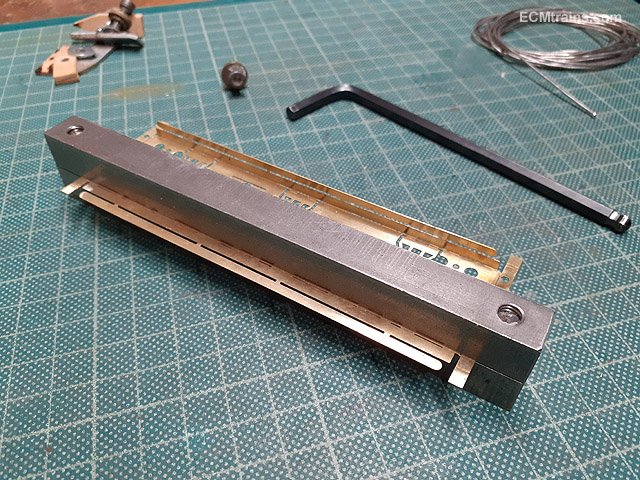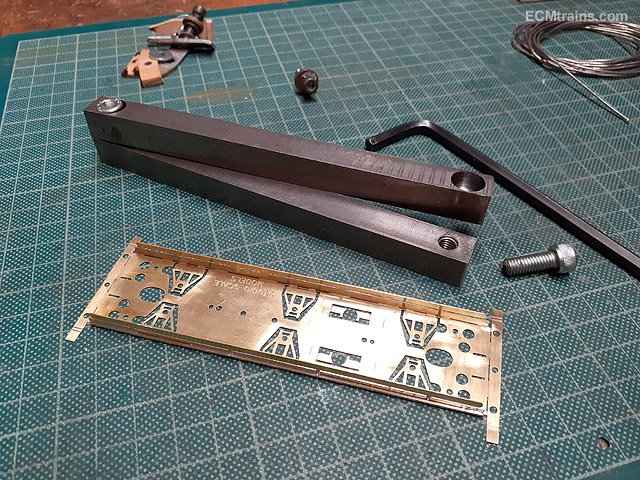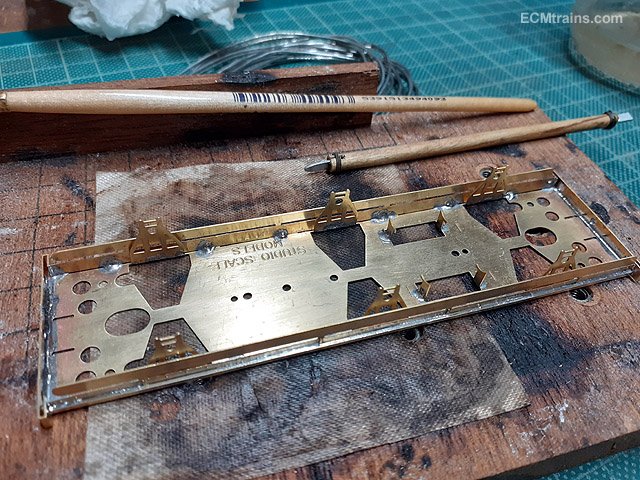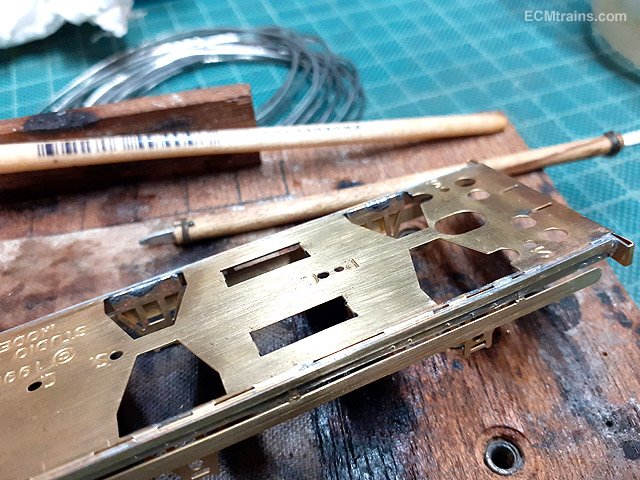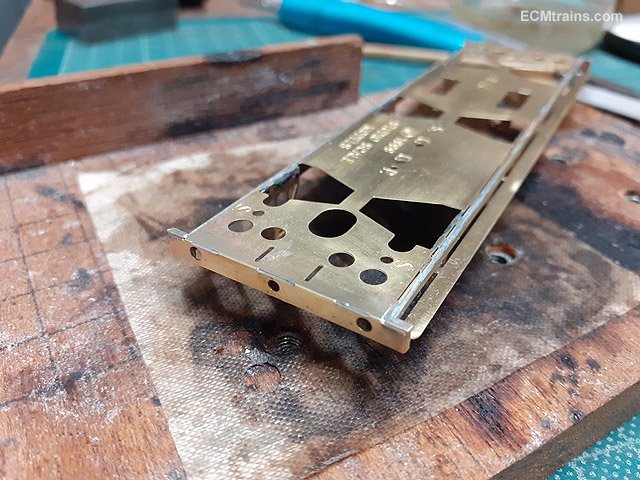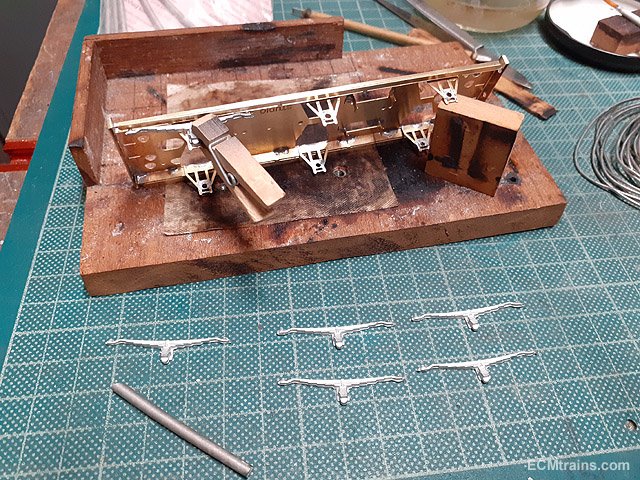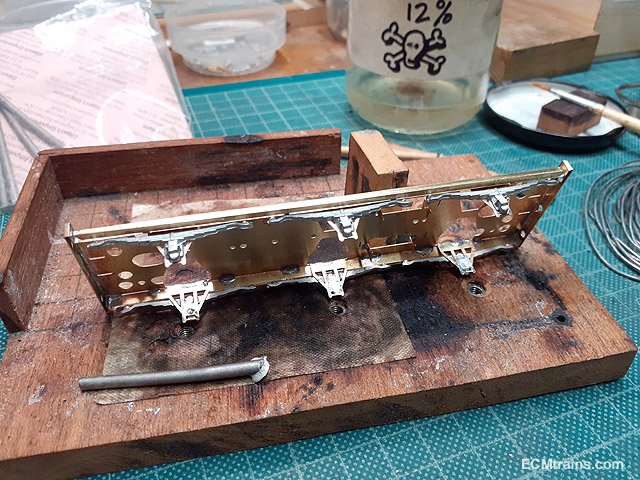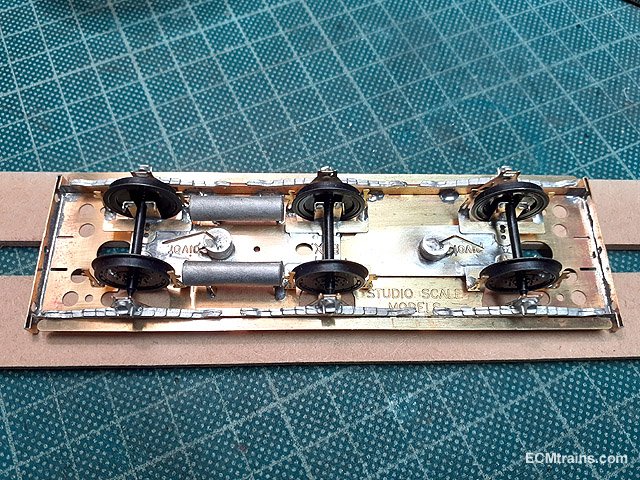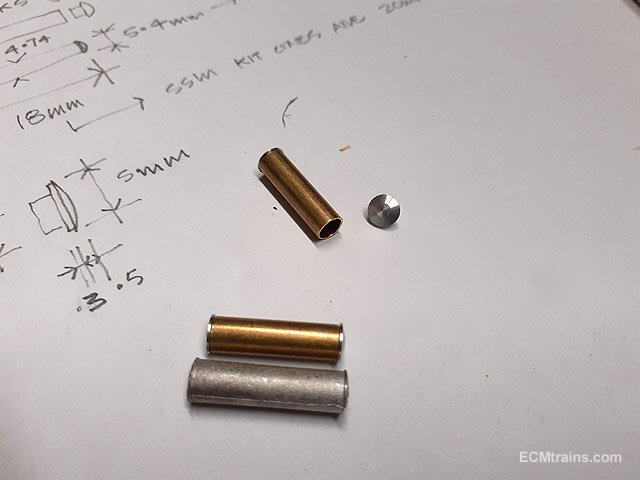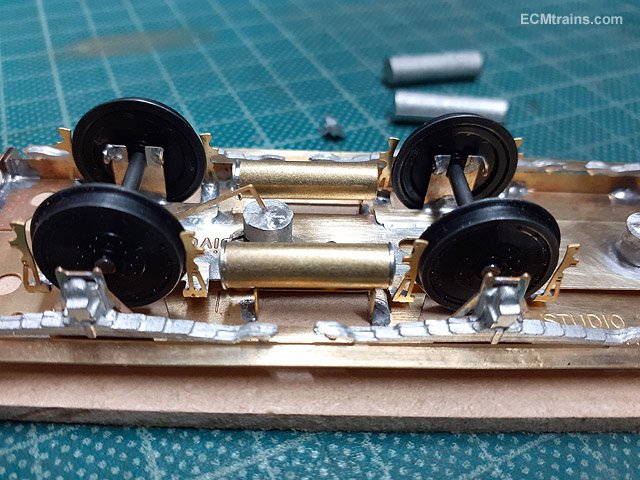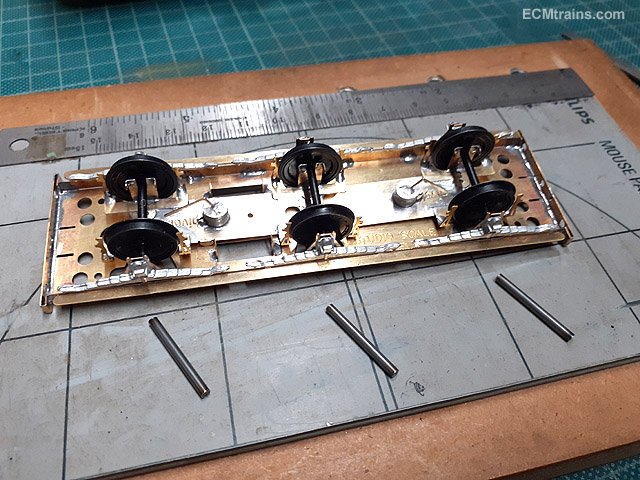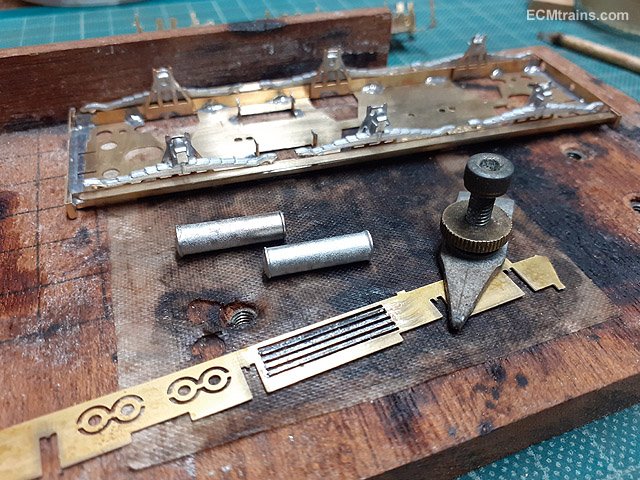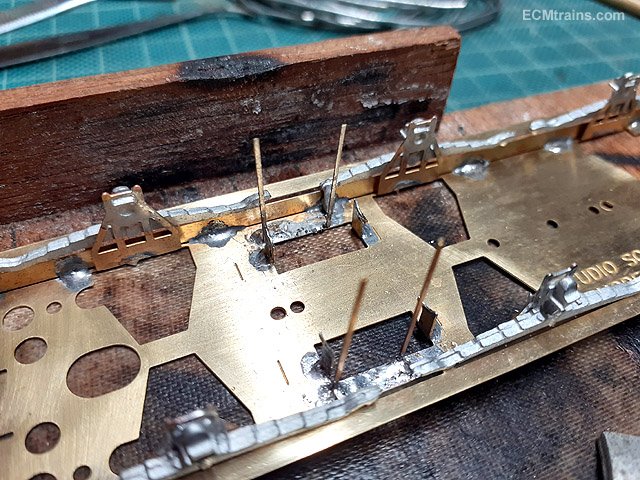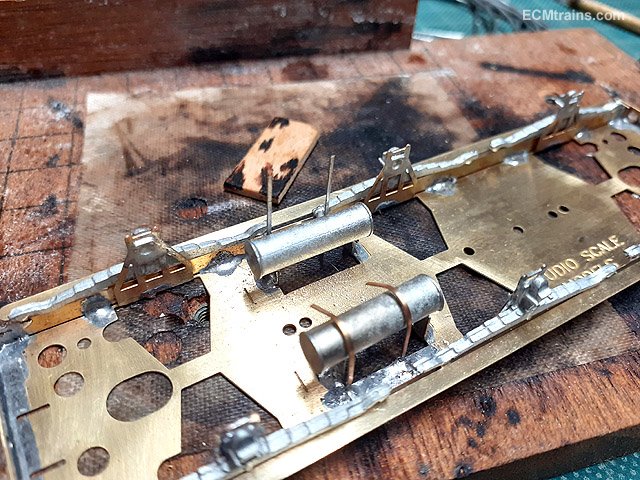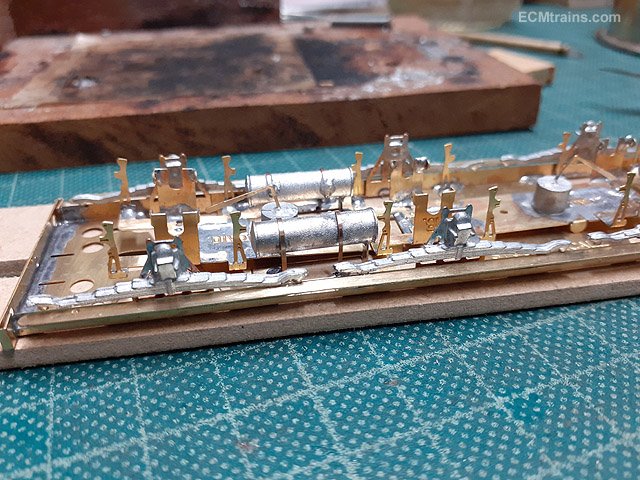-
Posts
2,731 -
Joined
-
Last visited
-
Days Won
70
Content Type
Profiles
Forums
Events
Gallery
Everything posted by murrayec
-
I know that J15 and the other locos chosen to run on the overhead I helped to choose them- all are in a poor state, all required works to be done for reliable running- alas my quote for doing this work was not accepted. Eoin
-
It's proposed to do maintenance off site! somewhere!, if those models have to run 7 days a week that's going to be quite regular unless their running systems are upgraded..... Eoin
-
@Colin R I calculated out areas back at the time of the planning process that a Gauge O layout for Irish stock could work with 2m radius curves and in some cases smaller radius where the track is not doing a 180deg curve and still incorporate display area at = 270sqm- that's around 2 times the size of the floor area given to the new OO layout and public circulation around the layout. It would not have been a rectangular board layout but a rambling layout that the public would have had access to 3/4 the way round.The layout was a small Gauge O layout about half the size of the original castle layout now dismantled. This plan also had a workshop facility and a staging area for trains to go out on the layout, I proposed the workshop as part of the museum exhibit. This idea was designed to fit the Casino site with minor modifications to the councils design and an extension into the courtyard at the front of the facility. It would have cost more..... So Colin to answer your question 270sqm Eoin
-
@jhb171achill When I made that comment about a Gauge O layout no way did I envisage someone in their not-so-right mind putting in a 'Gauge O Ceiling Level Track'.... Eoin
-
Yes, I heard similar from two ex councillors that went to see the museum, they said 'delighted to see the Fry Models back out on view' and 'that the layout was pretty good but after watching two trains go round n round it just got boring' they also told me that they would not go back..... Hopefully over time as the layout gets more complete their may be a more interactivity? Eoin
-
Now your talking, that's exactly what should have been done! - see more here and discuss this issue here;- Eoin
-
Now your talking, that's exactly what should have been done! The design of the museum was done completely separate and isolated from any model layout design! the design team only got in a consultant on the model railway layout after the building & the interior was designed- that's why there is not enough space?? Eoin
-
My buying list is endless........ Eoin
-
I'd go for a small 2" 'Record' bench vice and two aluminium angles for flat/soft jaws- could be got at https://www.mcquillantools.ie/ RS Components & Woodies (more expensive) do the small Stanly vice, one is swivel and other standard quick close, again use soft jaws with;- https://ie.rs-online.com/web/p/bench-hand-vices/8134350?cm_mmc=IE-PLA-DS3A-_-google-_-PLA_IE_EN_Tools-_-Clamps_And_Vices|Bench_And_Hand_Vices-_-PRODUCT_GROUP&matchtype=&aud-828197004210:pla-394098854818&gclid=CjwKCAjwpqv0BRABEiwA-TySwbuLSotWAyhS5r2sfS2pqx9AE4zoguhNMCBCq__8yln9y3v17-9EmxoCroMQAvD_BwE&gclsrc=aw.ds Photo of two, a 4" mounted on the main bench and a 2" fitted to a piece of MDF for clamping onto the small bench which allows any orientation;- Eoin
-
@Midland Man If a piercing saw is going to be used a good quality blade is essential, a lot of blades sold are muck and one will be frustrated in trying to control these!! Stay away from the 'Delux' modelling tool piercing blades for one..... Here is a link to good quality blades;- https://www.dixequipment.com/products/super-pike-sawblades/ When cutting out thin brass it can be helpful to stick the brass sheet to 2mm ply sheet as a backing which will help to guide the blade and stop the brass deforming, I have used 'Cow Gum' to stick paper and ply to the brass, its relatively easy to remove when cutting is done- I believe this gum is not available any more but one could use '3M Photo Mount' the blue can, the red can is stronger but rather hard to remove small parts from the ply.... Eoin
-
To do the buffers- I use Humbrol Gunmetal loaded up with talc, blob it on the buffer face nice and thick, after about an hour take a bud with a pointed end and polish the buffer from the centre pushing the blob to the edges and polishing the centre. Gunmetal gives a polished metal look and the gunge around the edge looks like grease that's been pushed away by 'scuffing' Eoin
- 13 replies
-
- 1
-

-
- resin kit
- cattle van
-
(and 1 more)
Tagged with:
-
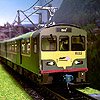
GSWR/GSR/CIE Six-Wheeled Coaches - ECMbuild in Gauge OO
murrayec replied to murrayec's topic in ECM Model Trains
@leslie10646 It is indeed, it was not great fresh out of it's box! ran it around n around and all it did was spread the dirt evenly along the track, changed the cleaning pads several times but still did the same. I intended to play around with it but at the time I inherited a Centerline Products Proto 2000 Rail Cleaner with no brass rolling wheel! after a bit of Googling I duly made a knurled brass wheel for it and haven't looked back at the Dapol- the Proto 2000 is excellent..... Eoin -

GSWR/GSR/CIE Six-Wheeled Coaches - ECMbuild in Gauge OO
murrayec replied to murrayec's topic in ECM Model Trains
@leslie10646 I also use Really Useful Boxes for storage of trains and modelling equipment, but their sizes are not so convenient to hold model parts on a build their either to small or to large!, so making boxes to suit was the best option. This is a three tier stepped rack for holding the build boxes, each tier is held in place with magnets so they can be lifted off separately or as one unit. The RUB train 9L storage boxes- I make up pocket trays from satyr-foam to fit in the box, each box takes two trays of 4 models. Eoin -

GSWR/GSR/CIE Six-Wheeled Coaches - ECMbuild in Gauge OO
murrayec replied to murrayec's topic in ECM Model Trains
@leslie10646 Thanks, the wooden boxes are home spun- with the amount of projects on the bench at the moment I can't rely on little piles of parts here n there in the workshop, as space is tight one is always moving things around and that's when parts get mixed up between projects- boxes are the solution and so handy. I now have a stack of them and the problem now is where to store them!! Eoin -
@Peter Use a glass-fibre pen to clean up the blades n rails, also use a bit of track cleaning liquid. You could use a surface mounted points motor with a mini switch on the outside of the motor, all you have to do is drills holes through the board to wire it up so you don't have to lift the points, then disguise it with a bit of 'Shrubbery'..... Eoin
-
TV/Media Sensationalism!! Whatever the FBI/prosecutor say is just legal argument! Any driver/conductor/engineer knows a train will not run very far without track, looking at the video images there is some considerable distance from where the train stopped to the ship...... Eoin
-
@jhb171achill Would it be Broadstone? Eoin
-

GSWR/GSR/CIE Six-Wheeled Coaches - ECMbuild in Gauge OO
murrayec replied to murrayec's topic in ECM Model Trains
@KMCE Thanks ken.... Everything is supplied except the decals- see the first photos above, a far better option than a WW scratch aid. The bogie system is just a single link, one less than the Cleminson awful yoke, so its got to be better. I've used the MJT wire sprung centre axle on my coaches but decided to stick with these kit ones- I'll let you know how they run- but there will be a delay! cant get the couplers due to business closures at the moment..... 21mm is allowed for but I'd say there is minimal side play on the centre axle? All kits have centre axle breaks, the instructions do say about clipping them off- one has to if using the gas tanks supplied with the kit! I decided to leave them on so made new shorter tanks, the client can clip them off if required. Eoin -
The 'sleeper' stones and chairs are set in the ground outside & across from the Cultra building entrance, no track though.... Eoin
-

GSWR/GSR/CIE Six-Wheeled Coaches - ECMbuild in Gauge OO
murrayec replied to murrayec's topic in ECM Model Trains
-
Wrennie, your on a roll this morning.... Eoin
-

GSWR/GSR/CIE Six-Wheeled Coaches - ECMbuild in Gauge OO
murrayec replied to murrayec's topic in ECM Model Trains
@Midland Man As far as I know SSM only do 4mm 6 wheelers;- http://www.studio-scale-models.com/Coaches.shtml Worsley Works do 7mm but not full kits, these are scratch aids and require a lot more working out and not always available;- http://www.worsleyworks.co.uk/7mm/7mm_Irish_Standard_Gauge.htm Alphagraphix do 7mm 6 wheelers, not sure if the do Irish ones, I have a few of their UK brass coach kits which are very nice- worth contacting them to see what they have, they advertise in Railway Modeller and you have to contact them that way- no website. Eoin -
I'm building 4 no Studio Scale Models Six wheeler coach Kits for a client;- All 1st All 3rd Brake 3rd 1st & 2nd Compo - Lav All parts come in the kits except for decals. Bogies are first, it's a link type system to allow the middle axle to float. The bogie parts cut, folded and soldering up with 180deg solder. The little hook on bogie 'A' was given some solder into the folds for a bit of strength. Break gear going on, the cylinders had to be modified to allow for the bogie pivot bolt head. These parts were soldered with 70deg WM solder, first thinning the brass with 180deg solder. Bogie system done. Chassis next, the solebar overlays were thinned with 180deg solder while in the sprue and then cut out. There are two overlays to be soldered on each side. I left the chassis flat for soldering these on, reckoned it was easier this way. Then folded the chassis up with folding bars in the bench vice. Done. After folding up the buffer beams, which there is also a detail overlay for but will go on later, I set to soldering the folds with a hefty fillet, and soldered the fold edge of the axle guards to give support. Little fiddly caps soldered on top of the outer ends of the buffer beams, and the upper step was folded out with a pliers. The lower step was folded up again with the bars and a fillet of solder run along the back of the fold. These will be soldered to the chassis later, also the axle guard tie bars, just to avoid damage as the bodywork progresses! Next the white metal spring castings, again thinning the brass with 180deg, clamping the casting on and soldering with 70deg solder. Done. When checking the gas tank location I found they fouled the break shoes on the middle axle, could not get them to fit- the instructions tells one to cut the shoes off!! I opted for an ECM solution! I decided to make new tanks 2mm shorter, brass tube and aluminium turnings on the lathe made up two masters for moulding. Testing the masters to see if it will work! I cut new shorter 2mm axles from piano wire to replace the pin point ones. The gas tank moulding worked out OK and now its time to fit them, the brass straps were thinned while held in the sprue and the tank mounts were thinned all with 180deg. The straps were removed and a 90 bend was put on one end to solder them to the underside of the chassis. The tanks were then soldered onto their supports with 70deg WM solder and the straps folded down over and soldered to the tanks on the inside, these ends are terminated on the tank inside so that the bogie will fit in. Done, break shoes just about miss and one tank did not sit down correctly! So then if you go back and read all the above again 3 times! it will get you to here;- Bodies next.... Eoin
- 68 replies
-
- 14
-

-

-
@jhb171achill It's generally done with paint, you may be referring to a guy that did an 08 on the Gauge O Guild fb site? if it is that one- it was all done with paint, he painted the body with white undercoat, then highlighted stuff with black and brown, then he painted the blue in a few lighter shades than if new! then he highlighted again, painted a lighter blue again and then used weathering wash. If the green Woolwiches are lined your best option is just to weather on top, otherwise if you try to fade the paint the lining will be lost! maybe you don't mind that- leave the model in the sunlight and over time it should fade- do remember to rotate it! and not to hot a place in the sun- it might melt! Eoin
-
From that experience we have decided to do just posts on the Greystones layout, it's a pity but will cause less fustration Eoin
.png.c363cdf5c3fb7955cd92a55eb6dbbae0.png)



